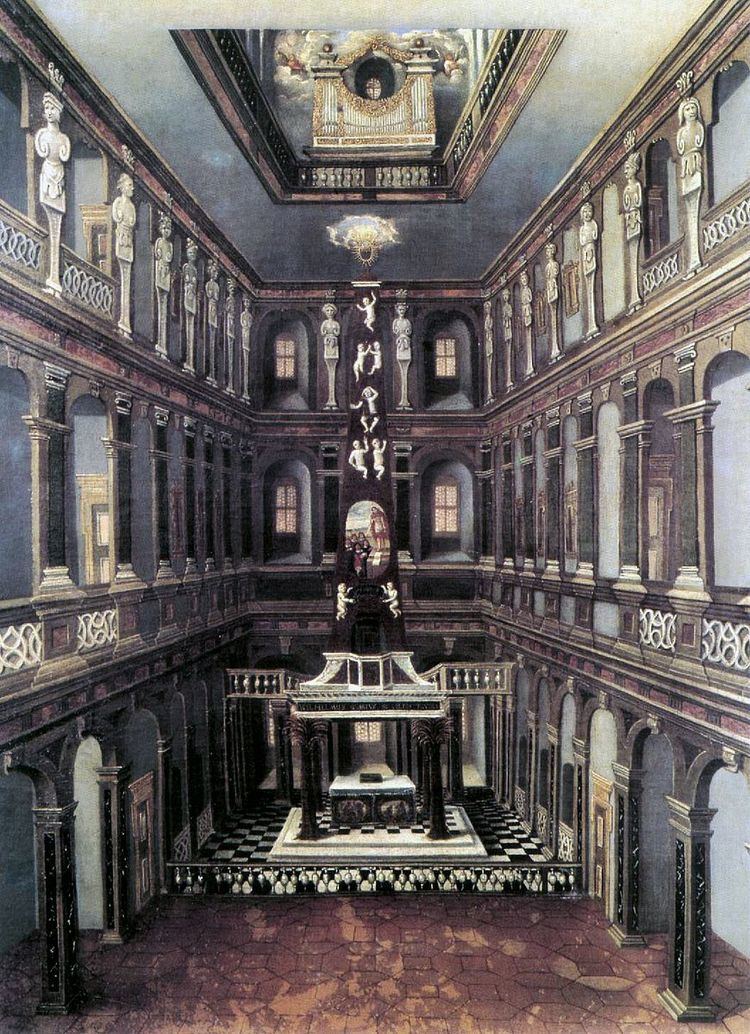Movements 6 | ||
 | ||
Scoring S T B soloistsSATB choircorno da tirarsi2 violins2 violascontinuo | ||
Ach! ich sehe, itzt, da ich zur Hochzeit gehe (Ah! I see, now, when I go to the wedding), BWV 162, is a church cantata by Johann Sebastian Bach. He composed it in Weimar for the 20th Sunday after Trinity and first performed it in 1715 or 1716.
Contents
History and words
On 2 March 1714 Bach was appointed concertmaster of the Weimar court capelle of the co-reigning dukes Wilhelm Ernst and Ernst August of Saxe-Weimar. As concertmaster, he assumed the principal responsibility for composing new works, specifically cantatas for the Schlosskirche (palace church), on a monthly schedule. He wrote the cantata for the 20th Sunday after Trinity. The prescribed readings for the Sunday were from the Epistle to the Ephesians, "walk circumspectly, ... filled with the Spirit" (Ephesians 5:15–21), and from the Gospel of Matthew, the parable of the great banquet (Matthew 22:1–14). The cantata text was provided by the court poet Salomon Franck, published in Evangelisches Andachts-Opffer (1715). He refers to the gospel and reflects how essential it is to follow the loving invitation of the Lord. Franck's language is rich in contrasts, such as Seelengift und Himmelsbrot (poison for the soul and bread of heaven), and of images derived from the Bible, such as Der Himmel ist sein Thron (Heaven is his throne) after Isaiah 66:1. The closing chorale is stanza 7 of Johann Rosenmüller's hymn "Alle Menschen müssen sterben" (1652).
Bach first performed the cantata on 3 November 1715 (according to the musicologist Alfred Dürr) or on 25 October 1716. Bach performed the cantata again on 10 October 1723 in his first year in Leipzig in a revised version, including a corno da tirarsi, a baroque wind instrument mentioned only in Bach's music and thought to have been similar to the slide trumpet (tromba da tirarsi). Bach's score is lost, and some parts seem to be missing as well.
Scoring and structure
Bach structured the work in six movements. Like other cantatas written during this period in Weimar, it is scored for a small ensemble, four soloists, corno da tirarsi (likely added in Leipzig), two violins, viola, and basso continuo, including bassoon in movement 1. Only the chorale is set for four voices.
- Aria (bass): Ach! ich sehe, itzt, da ich zur Hochzeit gehe
- Recitative (tenor): O großes Hochzeitfest
- Aria (soprano): Jesu, Brunnquell aller Gnaden
- Recitative (alto): Mein Jesu, laß mich nicht
- Duet aria (alto, tenor): In meinem Gott bin ich erfreut
- Chorale: Ach, ich habe schon erblicket
Music
The cantata opens with a bass aria in B Minor, accompanied by three instruments in a polyphonic setting, the two violins and the viola (with the corno). The motif for the first words is present most of the time. The soprano aria seems to lack a part for an obbligato instrument. For the Bach Cantata Pilgrimage of the Monteverdi Choir (and John Eliot Gardiner), Robert Levin reconstructed a version for flauto traverso and oboe d'amore. The duet is also accompanied only by the continuo, but seems complete. The melody of the closing chorale is rare elsewhere, but appeared in Weimar not only in this work, but also in a chorale prelude of Johann Gottfried Walther.
